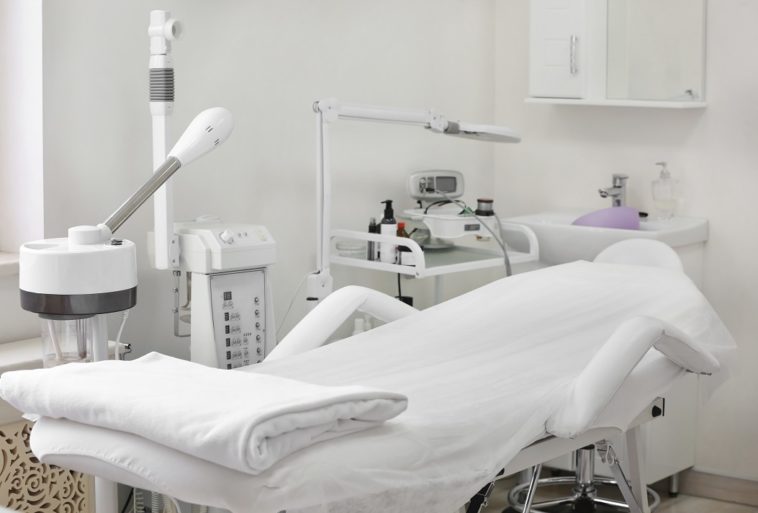Laser treatments are often used to correct localized vitiligo. This line of treatment is cost-effective compared to surgical means to restore pigmentation in the skin. Due to the optimal wavelength, small spots recover faster via laser treatments compared to traditional phototherapies. For dramatic re-pigmentation of the skin, the procedure is given two to three times a week for up to six months. To produce optimal results, topical medications can be prescribed alongside.
Many studies support the fact that many vitiligo patients who have had failed conventional therapies, get benefited by the laser treatment for vitiligo. However, more extensive studies need to be undertaken to evaluate the longevity of such pigmentation. Erythema, burning, blisters, and itching are reported as post-treatment side effects.
How does the laser treatment for vitiligo works?
The 308 nm Excimer Laser is the most widely used laser treatment for correcting vitiligo. The procedure emits monochromatic light, using smaller, 308 nm wavelengths. The laser’s deep penetration enables the radiation to reach any surviving melanocyte in the vitiliginous area. The treatment seems to contribute to both modulating the immune response and inducing melanocyte migration and proliferation from the niche located in hair follicles. The ultimate rate of repigmentation is shown to depend on the total number of treatment sessions, not the frequency.
Several other emerging lasers are being used in the treatment of vitiligo. These include low-energy 632.8-nm helium-neon (He-Ne) lasers, ablative fractional lasers, a gain-switched 311-nm Ti-sapphire laser, and a 355-nm monochromatic UVA1 laser.
Types of laser treatments for vitiligo
308 nm Excimer Laser
The 308-nm xenon chloride excimer laser was first suggested for the treatment of vitiligo in 2001. The process got the FDA’s approval in 2007. Many studies have assessed the efficacy of 308 nm excimer lasers between 15 and 61%. However, the treatment response is mainly dependent on the body site.
Currently, there is little evidence to support the superior efficacy of excimer lasers compared with the Narrowband UVB phototherapy. However, the excimer laser has shown to be associated with a faster onset of repigmentation and fewer treatment sessions for a successful response compared with conventional phototherapy.
Low-Energy 632.8 nm Helium-Neon Laser
The procedure has been addressed in the treatment of segmental vitiligo. Despite favorable results from laboratory and clinical studies, additional trials are needed to confirm the indications for the use of He-Ne lasers in vitiligo.
Ablative Fractional Laser
Initially developed for the remodeling of scars, the procedure has also been tried to induce repigmentation in vitiligo. Ablative Fractional Laser decreases the risk of potential side effects compared to other laser treatment methods. The process enhances the repigmentation rate by increasing penetration of the dermis by ultraviolet radiation, removing affected keratinocytes, and inducing various kinds of cytokines and growth factors that may act as mitogens for melanocytes. However, more clinical trials are needed to evaluate the efficacy of this laser treatment alone in the treatment of vitiligo.
Gain-Switched 311-Nm Ti-sapphire laser
The Korean Food and Drug Administration approved this procedure for the treatment of vitiligo in 2015. This laser method has some advantages compared with the 308-nm excimer laser. These advantages include deeper penetration by the 311 nm wavelength, the use of a solid medium and reduced maintenance costs.
355-Nm Ultraviolet A1 Laser
First introduced to treat psoriasis, this laser treatment method has also been shown to be useful in the treatment of chronic skin disorder. In this method, UVA1 wavelengths penetrate the skin more deeply, modulating the activities of immune and inflammatory cell populations in the dermis. By increasing melanin density and elongation and branching of melanocyte dendrites, pigmentation or tanning is achieved in the affected skin.

